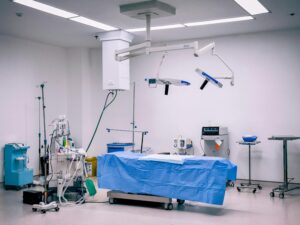In the medical fabrication industry, process validation is not a luxury but an indispensable obligation. It guarantees that equipment and procedures operate in a balanced manner, delivering products that meet all required details and regulations.
Process Validation: Defining IQ, OQ, and PQ in the Medical Manufacturing Context
Process validation in the medical manufacturing units consists of three sequential stages. These are IQ OQ PQ, and each serves a resolution in manufacturing environments:
- IQ (Installation Qualification). This phase confirms that the incoming scheme or equipment has the proper structure in accordance with the manufacturer’s principles. It also verifies that it meets the requests recognized for this kind of product.
- OQ (Operational Qualification). Here, the tool determines that it operates continuously and adheres to the established factors or limits for its operation.
- PQ (Performance Qualification). This stage certifies that the equipment operates with simulated or real materials, producing units that meet the final specifications.
Therefore, it is necessary to comply with the guidelines because they are the main support for demonstrating quality in the development of medical products.
When and Why These Validations Are Required
These validations are requirements to demonstrate the control and continuity of manufacturing processes. Furthermore, their application confirms ISO 13485 compliance and the strictest FDA standards.
When are these obligations necessary?
These are mandatory in different crucial scenarios, such as the following:
- When starting up new equipment or processes. Before using a new machine or any new method, you must first apply the complete trilogy.
- Implementing modifications or changes. When making any adjustments that affect product performance or quality, the company will apply for a review. This includes changes to the equipment system, the reinstallation or relocation of machinery, and modifications to components or suppliers.
- Periodic and routine events. The assessment is exhaustive, but some processes need authentication to verify that their performance has changed over time.
So, these are necessary implementations to maintain the quality, uniformity, and standard of any manufactured medical item.
Why is process validation necessary?
The process validation proposes the objective evidence that regulatory systems require for the fabrication of medical supplies:
Comply with regulations
Organizations must comply with ISO 13485 (clause 7.5.6) and FDA requirements (21 CFR Part 820.75). This applies when the company cannot verify production processes through subsequent inspections.
The globally accepted methodologies for complying with this rule are Installation Qualification, Operational Qualification, and Performance Qualification validations.
Responsible for quality and patient safety
The goal of applying these validations is to ensure that all batches of medical supplies are safe for use. Furthermore, certifying processes minimize the risk of producing devices that cause harm to the user or could fail.
Industrial risk management
By implementing robust approval processes, owners can safeguard their businesses against delays that can lead to substantial economic losses. Therefore, demonstrating reasonable process control during an audit prevents regulatory observations that could halt product manufacturing.
In general, process validation is proof of what a manufacturer can contribute to mastering its quality production process.
Validation as a Safeguard for OEMs and End Users
These validations are a fundamental shield of protection for both key players in the industry: Original Equipment Manufacturers, medical manufacturers, and end users. In this case, the documentation generated is the tangible proof that safeguards device performance and, ultimately, patient safety.
Protection for the equipment manufacturer (OEM)
For the OEM, a complete and properly executed validation protocol is a risk management tool and a guarantee of quality for the following reasons:
- Provides evidence that the manufacturer complies with the standard. It proves that the manufacturer delivered, installed, and tested the product for proper operation. This protects the OEM from unjustified claims of malfunction due to improper setup or operation by the user.
- Competitive distinction and added significance. It validates the manufacturer’s commitment to quality and reliability, which instills customer confidence and facilitates the sale.
- Reduction in post-sales support costs. Should any upcoming problems arise, the OEM and client can refer to the information to rule out causes related to the first installation or condition. This speeds up episode resolution and reduces service costs.
That is to say, validation processes enable the manufacturer to avoid future problems by demonstrating its commitment to excellence and strict adherence to standards.
End user protection
In this case, for the manufacturer using the equipment in its production line, certification is a guarantee of investment and its defense against regulators:
- Guarantees product performance and quality.
- It is a vital document for FDA and ISO 13485 requirements.
- It protects the patient and the company from legal consequences.
In essence, process validation benefits both parties through risk reduction and the confidence that safe procedures provide.
Risks of Skipping or Incompletely Performing Validations
Dispensing with IQ, OQ, and PQ validations or applying them only lightly represents a high risk because:
- Negative consequences for product quality and patient safety. Noncompliance with a Performance Qualification (PQ) can result in products that do not meet standard specifications. This can lead to costly process deviations or even waste.
- Device failure and patient harm. An unvalidated practice can present disparities that may lead to failures in the units. This harm can result in failures, therefore compromising patient safety and also opening a path for a civil court case.
- Cross-contamination or compromised sterility. In operations such as cleaning or sterilization, an insufficient OQ may indicate that the equipment does not meet specific standards, resulting in sterility issues with alarming consequences.
Moreover, missing or making flawed authentications bears guiding and legal drawbacks, such as:
- Audit warnings and comments. The deficiency of IQ, OQ, and PQ actions and information will result in serious remarks (FDA Form 483) and nonconformities, which could harm a company’s status.
- Market obstruction. If the organization does not submit the authentication, it will not get credentials such as CE Marking or FDA certification.
- Severe regulatory actions. If authorities challenge the noncompliance, they will issue warning letters, impose high fines, and even order a production halt.
- Exponentially higher correction costs. Implementing validation under regulatory pressure is more costly than doing it right from the start. This can lead to expenditures of urgent resources and fines, which halt other activities.
- Irreparable damage to the company’s reputation. Trust and quality establish a company’s reputation in the medical industry. Therefore, regulatory action or a recall due to poor certification destroys credibility with customers, investors, and partners, giving rivals a competitive advantage.
In short, compliance with validation is the best insurance policy for maintaining a business at an optimal competitive level.
How RexMed Performs and Documents IQ, OQ, and PQ Validations
At RexMed, we understand that process validation is the backbone of quality and compliance. Our methodology is based on pre-approved and comprehensive protocols for each stage (IQ, OQ, PQ).
This way, we can meet FDA requirements and comply with ISO 13485 standards. We also perform these validations as part of our manufacturing techniques, creating reports that provide our clients with the evidence and peace of mind they need for audits.
It ensures that every part of the gear not only matches the details but is also designed to work within the controlled medical field from the outset. Ultimately, process validation is more than just a formality; it forms the foundation of quality and adherence to regulations in the medical field.
Strictly following these steps into action lowers both work and rule risks, ensuring patient safety while also protecting the maker’s name and ability to continue.






